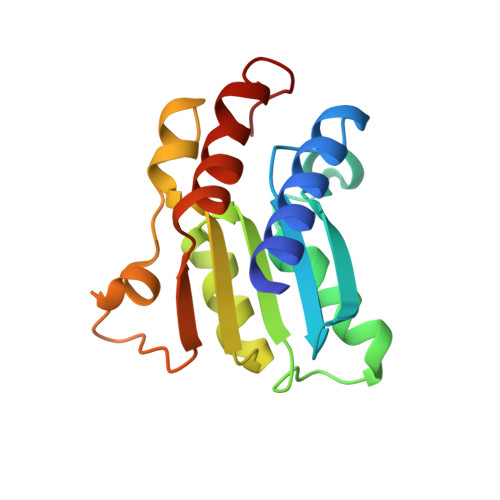Substrate Specificity of GSDA Revealed by Cocrystal Structures and Binding Studies.
Jia, Q., Zhang, J., Zeng, H., Tang, J., Xiao, N., Gao, S., Li, H., Xie, W.(2022) Int J Mol Sci 23
- PubMed: 36499303
- DOI: https://doi.org/10.3390/ijms232314976
- Primary Citation of Related Structures:
7DCB, 7DCW, 7DGC, 7DH1, 7DM5, 7DM6, 7DQN, 7W1Q - PubMed Abstract:
In plants, guanosine deaminase (GSDA) catalyzes the deamination of guanosine for nitrogen recycling and re-utilization. We previously solved crystal structures of GSDA from Arabidopsis thaliana (AtGSDA) and identified several novel substrates for this enzyme, but the structural basis of the enzyme activation/inhibition is poorly understood. Here, we continued to solve 8 medium-to-high resolution (1.85-2.60 Å) cocrystal structures, which involved AtGSDA and its variants bound by a few ligands, and investigated their binding modes through structural studies and thermal shift analysis. Besides the lack of a 2-amino group of these guanosine derivatives, we discovered that AtGSDA's inactivity was due to the its inability to seclude its active site. Furthermore, the C-termini of the enzyme displayed conformational diversities under certain circumstances. The lack of functional amino groups or poor interactions/geometries of the ligands at the active sites to meet the precise binding and activation requirements for deamination both contributed to AtGSDA's inactivity toward the ligands. Altogether, our combined structural and biochemical studies provide insight into GSDA.
Organizational Affiliation:
MOE Key Laboratory of Gene Function and Regulation, School of Life Sciences, Sun Yat-Sen University, Guangzhou 510006, China.
















